- Email: - info@securexglobal.net
- 25FJ+7H, Limbe, Cameroon
- +237 6 78 34 12 61
- Email: - info@securexglobal.net
- 25FJ+7H, Limbe, Cameroon
- +237 6 78 34 12 61
- Email: - info@securexglobal.net
- 25FJ+7H, Limbe, Cameroon
- +237 6 78 34 12 61
ENCOR v1.2 – Implementing and Operating Cisco Enterprise Network Core Technologies


Duration
45 Days

Delivery
(Online and onsite)

Price
Price Upon Request
The Implementing and Operating Cisco Enterprise Network Core Technologies (ENCOR) v1.2 course gives you the knowledge and skills needed to configure, troubleshoot, and manage enterprise wired and wireless networks. You’ll also learn to implement security principles within an enterprise network and how to overlay network design by using solutions such as SD-Access and SD-WAN.
This course helps you prepare to take the 350-401 Implementing Cisco® Enterprise Network Core Technologies (ENCOR) exam, which is part of four new certifications:
This course helps you prepare to take the 350-401 Implementing Cisco® Enterprise Network Core Technologies (ENCOR) exam, which is part of four new certifications:
- CCNP® Enterprise
- CCIE® Enterprise Infrastructure
- CCIE Enterprise Wireless
- Cisco Certified Specialist – Enterprise Core
After taking this course, you should be able to:
- Illustrate the hierarchical network design model and architecture using the access, distribution, and core layers
- Compare and contrast the various hardware and software switching mechanisms and operation, while defining the Ternary Content Addressable Memory (TCAM) and Content Addressable Memory (CAM), along with process switching, fast switching, and Cisco Express Forwarding concepts
- Troubleshoot Layer 2 connectivity using VLANs and trunking
- Implementation of redundant switched networks using Spanning Tree Protocol
- Troubleshooting link aggregation using Etherchannel
- Describe the features, metrics, and path selection concepts of Enhanced Interior Gateway Routing Protocol (EIGRP)
- Implementation and optimization of Open Shortest Path First (OSPF)v2 and OSPFv3, including adjacencies, packet types, and areas, summarization, and route filtering for IPv4 and IPv6
- Implementing External Border Gateway Protocol (EBGP) interdomain routing, path selection, and single and dual-homed networking
- Implementing network redundancy using protocols including Hot Standby Routing Protocol (HSRP) and Virtual Router Redundancy Protocol (VRRP)
- Implementing internet connectivity within Enterprise using static and dynamic Network Address Translation (NAT)
- Describe the virtualization technology of servers, switches, and the various network devices and components
- Implementing overlay technologies such as Virtual Routing and Forwarding (VRF), Generic Routing Encapsulation (GRE), VPN, and Location Identifier Separation Protocol (LISP)
- Describe the components and concepts of wireless networking including Radio Frequency (RF) and antenna characteristics, and define the specific wireless standards
- Describe the various wireless deployment models available, include autonomous Access Point (AP) deployments and cloud-based designs within the centralized Cisco Wireless LAN Controller (WLC) architecture
- Describe wireless roaming and location services
- Describe how APs communicate with WLCs to obtain software, configurations, and centralized management
- Configure and verify Extensible Authentication Protocol (EAP), WebAuth, and Pre-shared Key (PSK) wireless client authentication on a WLC
- Troubleshoot wireless client connectivity issues using various available tools
- Troubleshooting Enterprise networks using services such as Network Time Protocol (NTP), Simple Network Management Protocol (SNMP), Cisco Internetwork Operating System (Cisco IOS®) IP Service Level Agreements (SLAs), NetFlow, and Cisco IOS Embedded Event Manager
- Explain the use of available network analysis and troubleshooting tools, which include show and debug commands, as well as best practices in troubleshooting
- Examining Cisco Enterprise Network Architecture
- Understanding Cisco Switching Paths
- Implementing Campus LAN Connectivity
- Building Redundant Switched Topology
- Implementing Layer 2 Port Aggregation
- Understanding EIGRP
- Implementing OSPF
- Optimizing OSPF
- Exploring EBGP
- Implementing Network Redundancy
- Implementing NAT
- Introducing Virtualization Protocols and Techniques
- Understanding Virtual Private Networks and Interfaces
- Understanding Wireless Principles
- Examining Wireless Deployment Options
- Understanding Wireless Roaming and Location Services
- Examining Wireless AP Operation
- Understanding Wireless Client Authentication
- Troubleshooting Wireless Client Connectivity
- Introducing Multicast Protocols
- Introducing QoS
- Implementing Network Services
- Using Network Analysis Tools
- Implementing Infrastructure Security
- Implementing Secure Access Control
- Understanding Enterprise Network Security Architecture
- Exploring Automation and Assurance Using Cisco DNA Center
- Examining the Cisco SD-Access Solution
- Understanding the Working Principles of the Cisco SD-WAN Solution
- Understanding the Basics of Python Programming
- Introducing Network Programmability Protocols
- Introducing APIs in Cisco DNA Center and vManage
- Mid-level network engineers
- Network administrators
- Network support technicians
- Help desk technicians
Knowledge and skills you should have before attending this course:
- Implementation of Enterprise LAN networks
- Basic understanding of Enterprise routing and wireless connectivity
- Basic understanding of Python scripting

Copyright @2024 SecureX Global Services. All Rights Reserved.
-
Billy: Thank you for reaching out to SecureX Customer Services. My name is Billy, and I am an automated assistant. How may I assist you today?
SecureX Customer Support Agent


